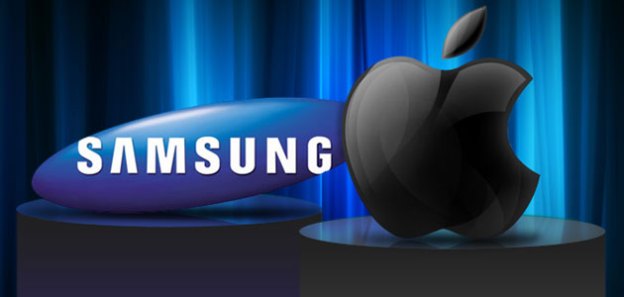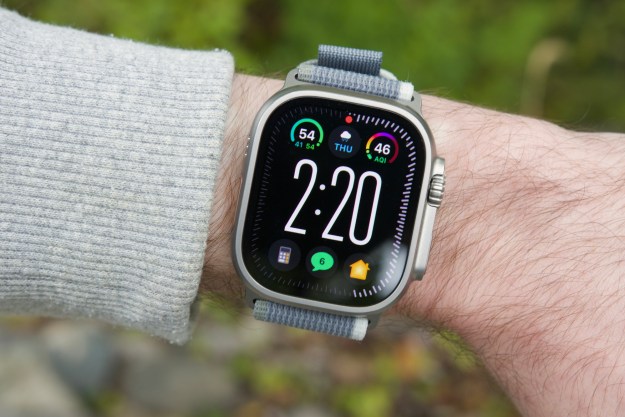
The smartphone market is hugely competitive, but in recent years the landscape has been dominated by two companies: Apple and Samsung. They’ve both made the news, sold more smartphones than their competitors, and raked in the lion’s share of the profit. Is there room for so many other players? Just how dire is the situation for HTC, Sony, Motorola, Nokia, and BlackBerry?
Samsung and Apple claim all the profit
There was a big fuss when the market research firm Canaccord Genuity announced that Samsung and Apple had cornered all smartphone profits back in the second quarter of 2012. By factoring in the losses of Motorola, Nokia, Sony, Research In Motion (now BlackBerry), and others, they calculated that 108 percent of the profit went to the big two. Apple claimed 71 percent and Samsung claimed 37 percent. That combined total dropped to 103 percent for the entire year of 2012, which was 69 percent for Apple and 34 percent for Samsung.
You may wonder how two or three companies can claim more than 100 percent of profits. Well, that’s technically because of the large losses that other phone makers are taking.
Moving on to 2013 there are signs that the duopoly on profit may be slipping, ever so slightly. In the first quarter of the year they could only manage 100 percent between them. Apple has slipped to 57 percent and Samsung is now claiming 43 percent. The only other manufacturer that managed to claim a share was LG with 1 percent, most of the others stabilized around break even, with Motorola still making a loss.
It’s important to remember that these are estimates. If you take a look at the full Canaccord Genuity report you’ll see that, although ZTE and Huawei have claimed larger market shares in terms of smartphone sales than HTC, Sony, Nokia, BlackBerry, or Motorola in the first quarter of 2013, they aren’t included in the profit analysis at all.
The others
If we look at another source, we can see how you might logically lay out the field. Here’s a table from IDC showing the worldwide smartphone shipments and the market share that represents for the first quarter of 2013.

You’ll note that HTC, Sony, Nokia, BlackBerry, and Motorola are all listed under “Others” because their market shares are relatively small. Let’s briefly run through the “Others” and see how bad things are really looking. Brace yourself: it’s not pretty.
HTC
It’s been almost a year since we asked what’s going on at HTC? The truth is that, despite a beautiful flagship in the shape of the HTC One, everything is not rosy in Taiwan. For the first quarter of 2013 HTC posted its lowest ever profit at $2.8 million and that was its sixth straight decline. There’s speculation that the production problems may have cost HTC valuable sales, and now that the Galaxy S4 is out, the HTC One has stiff competition. The company is reportedly closing in on 5 million HTC One sales, but the S4 already passed 10 million sales in less than a month.
We’ll have to wait for the next quarterly results to really assess the impact of the HTC One, but it’s worth remembering that the company is still profitable. It may be down, but it’s certainly not out. A decent profit on the HTC One could still be the beginning of a comeback for HTC, and the newly announced HTC One Google Edition should help.
Sony
It has been a tumultuous year for Sony, and it’s tough to get a clear picture of its mobile business. A rebranding in 2012 saw the Ericsson name dropped and Sony pushed the new Xperia line. The whole company posted a $948.5 million net profit for the January to March quarter, but, as this EET Asia article points out, a lot of assets were offloaded and the mobile division is still firmly in the red. Sony revealed that 8.1 million Xperia phones (all of its smartphones are Xperia branded) were shipped in the first quarter of 2013 and that’s down from the last two quarters of 2012.
The flagship Xperia Z smartphone has done deservedly well – analysts estimated 4.6 million Xperia Z sales in the first 40 days on sale, but Sony executives have pointed out a downside of that success. According to Xperia Blog, the Chief Financial Officer, Masaru Kato: “Xperia Z was doing so well, so other models which we were expecting a lot of in sales did not actually make it.” So while the Z is performing well, other Xperia phones are not.
Sony has deep pockets and profitable parts of its business can prop up the mobile division, but how long will it continue to eat those smartphone losses before it considers getting out of the market? In the U.S., Sony has never had success with mobile carriers. AT&T remains its only strong partner.
Motorola
Google owns Motorola Mobility, but set its involvement aside for a moment and the financial situation at Motorola looks bad. According to Google’s Q1 2013 Earnings Summary, Motorola Mobility made a loss of $271 million for the quarter. This is after Google axed 4,000 jobs (20 percent of Motorola’s workforce) and closed a third of its offices at the end of last summer. There was also the announcement in March this year that an additional 1,200 jobs would be lost.
So far, it looks like Google’s attempt to return the company to profitability has failed, but all this streamlining comes ahead of the much anticipated Moto X phone. It will be manufactured in the U.S. and promises to have some enticing, unique features and an affordable price tag. A big hit could give Motorola its first profitable quarter in a very long time and usher in a new age for the company. Google certainly has the muscle to make Motorola a real force again, but concerns about showing favoritism over other Android manufacturers seem to be holding it back. This could be a make or break year for Motorola. If it’s to succeed, the Moto X phone needs to be a cross-carrier success, like the original Razr, and it needs to stand out. Recent Motorola phones have only been released on one carrier at a time.
Nokia
Though it’s one of the titans of the feature phone age, Nokia has struggled to adjust to the smartphone revolution. After switching CEOs to Stephen Elop, an ex-Microsoft exec, Nokia dumped its in-house platforms Symbian and MeeGo, and went all-in with Windows Phone. Nokia’s first quarter results for 2013 show a loss of $196 million, but that’s a major improvement on a year ago when the loss was $1.7 billion. Nokia did also turn a profit of $557 million in the last quarter of 2012, so there are signs it is going in the right direction.
Device sales aren’t bad, but they aren’t anywhere near good enough for Nokia to regain its former mastery of the mobile market. Much depends on whether Microsoft’s Windows Phone platform can continue to make gains and claim a solid third place behind Android and iOS. Will Nokia continue to remain committed to Windows Phone, or could it do better by adopting another platform? The fact that Samsung is outselling Nokia in its home market of Finland now highlights its fall from grace.
BlackBerry
The now rebranded RIM took its time with the new BlackBerry 10 platform and launched with the touchscreen-only Z10 handset. It was favorably received, on the whole, but many analysts have asked whether it’s too little too late. The classic-looking BlackBerry Q10 handset has been released since then, but it’s not clear how strong sales have been. BlackBerry announced a profit of $94 million last quarter, partly based on 1 million Z10 sales, but 6 million smartphone sales overall and a drop to 76 million subscribers is disappointing.
A recent IDC survey suggested that BlackBerry’s market share fell to 2.9 percent in the first quarter of 2013 and was overtaken by Windows Phone, which jumped to 3.2 percent. Gartner disagrees, suggesting 3 percent for BlackBerry and 2.9 percent for Windows Phone. Either way, they are neck and neck. Interestingly, BlackBerry is taking measures to extend its brand beyond the BB10 platform by releasing BBM for iOS and Android. It’s also bringing in Secure Work Space, which will enable some of its BES (BlackBerry Enterprise Service) platform’s security features to work with Android and iOS devices. This could be a very clever move that will keep BlackBerry in the game as a software and service provider, even if people are no longer buying its phones. On the other hand, it does reduce platform USPs for BlackBerry devices.

New kids on the block
We’re seeing some major new players in the smartphone market, but they aren’t always credited by the analysts. The fact that ZTE is the third most popular smartphone maker in the U.S. after meteoric growth often seems ignored. Huawei is another Chinese manufacturer making major gains worldwide and climbing the charts to displace the “Others” we discussed above. LG isn’t new, but it seems to be enjoying some newfound success, partly thanks to the Nexus 4 and Optimus G. Even in a space this crowded we’re hearing that companies like Lenovo have U.S. smartphone plans.
There are also some smaller players, like the Finnish, Nokia spin-off Jolla and the ethically-minded Dutch Fairphone entering the fray. This is by no means an exhaustive list, so if the old guard thinks it’s tough now, the bad news is that it’s only going to get tougher.
Is there room for everyone?
The truth is that the smartphone market is huge. It can easily support a multitude of companies, big and small, and it already does. If you can look beyond the tech headline hyperbole about impending death, most manufacturers are a lot healthier than reports would suggest. They may have to scale back or change direction, but they’re not likely to disappear completely.
It will become harder for Samsung and Apple to maintain their stranglehold on profits as time moves on. Mobile technology has changed rapidly and stagnation can lead to a mass exodus of customers. One big hit could bring any of the “Others” right back into the big leagues, but they’ll need a combination of innovation and marketing success if they want to unseat the current market leaders. Let’s hope they do. There’s nothing healthier than good competition.
Editors' Recommendations
- Look who just replaced Samsung as king of the global smartphone market
- Hey Samsung, the Apple Watch Ultra is how you make a real adventure smartwatch

